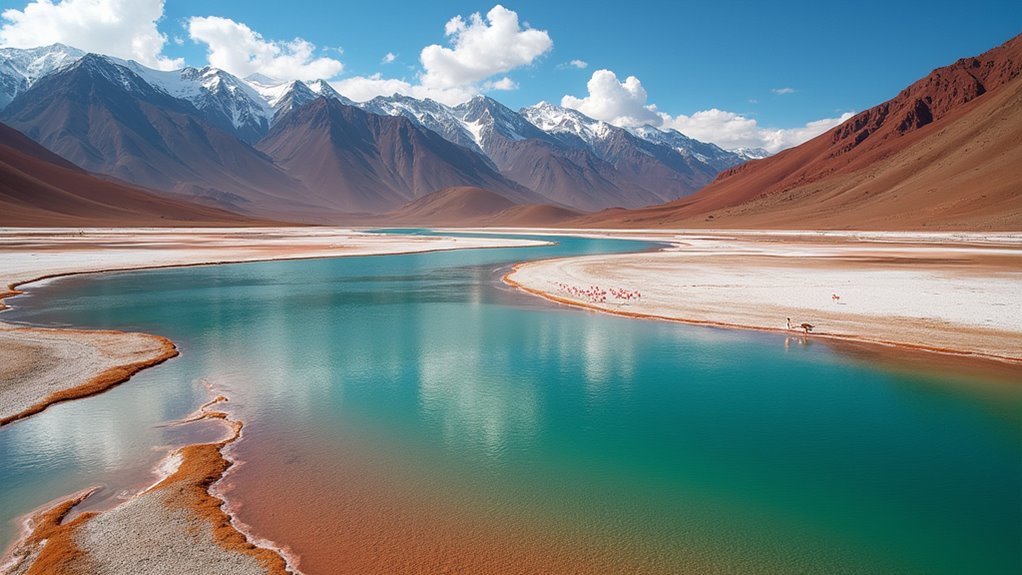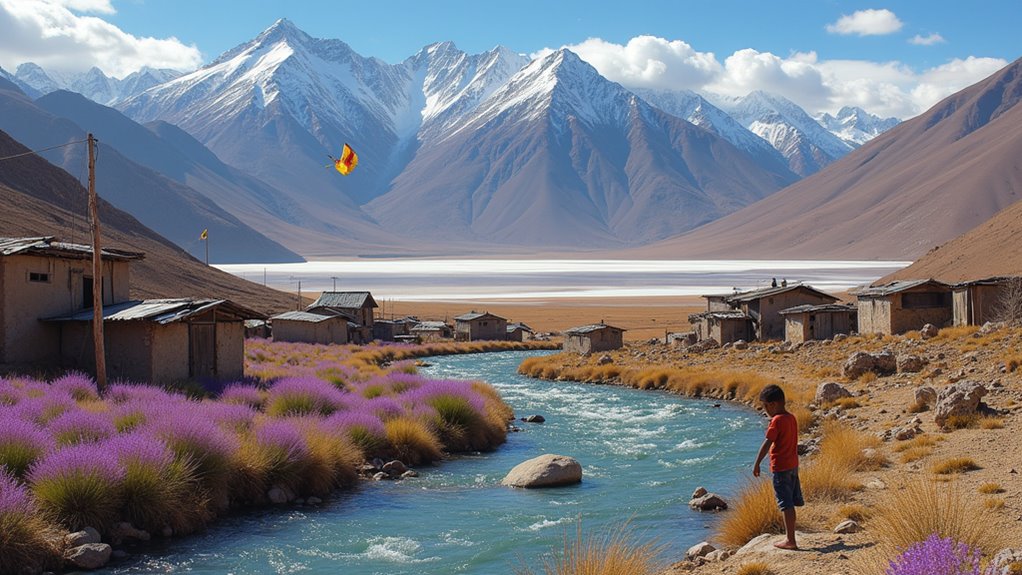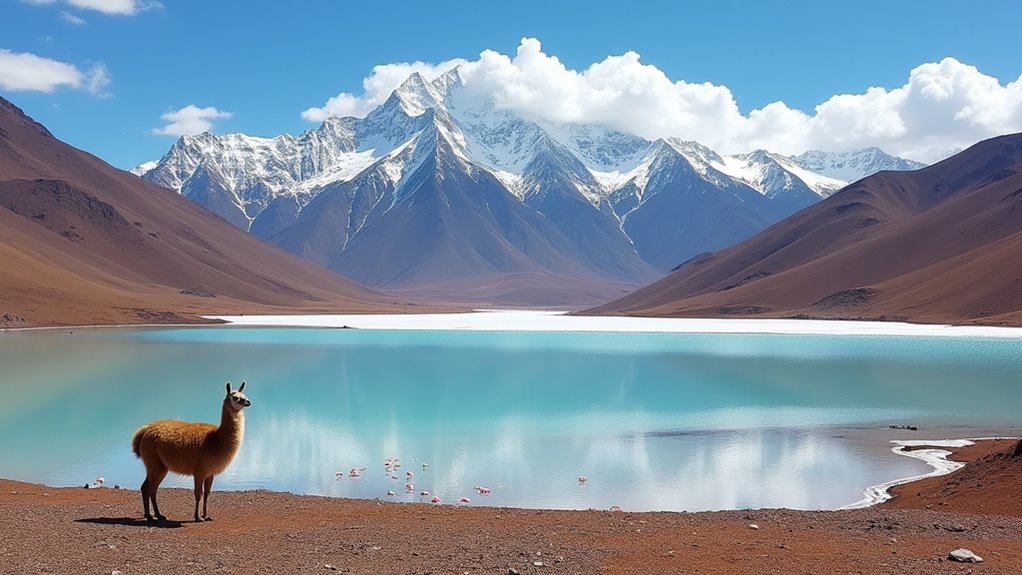Physical Address
304 North Cardinal St.
Dorchester Center, MA 02124
Physical Address
304 North Cardinal St.
Dorchester Center, MA 02124

The paradox of Bolivia's stunning riches and stark poverty reveals why some resource-blessed nations struggle to transform natural wealth into prosperity.
Like a treasure chest buried in plain sight, Bolivia’s natural wealth invites you to explore its contradictions. You’ll find a land where precious metals glitter beneath the soil and rare ecosystems thrive in pristine landscapes, yet poverty persists in many communities. It’s a place where ancient indigenous wisdom meets modern resource exploitation, and where your tourist dollars could either help preserve or inadvertently harm these delicate systems. Understanding this paradox holds the key to grasping similar patterns worldwide.

While Bolivia serves as one of South America’s most prosperous countries in natural resources, this abundance hasn’t translated into widespread prosperity. You’ll find the country holds impressive reserves of minerals like tin, silver, gold, and zinc, plus it’s home to vast deposits of lithium – essential for modern battery production.
Bolivia’s resource wealth extends beyond minerals. You’ve got significant natural gas reserves, making it a top-three producer in South America, plus extensive timber resources and arable land. The country even dominates the global ametrine market, producing virtually all commercial supplies of this unique gemstone. The country’s mining sector generated an impressive $4.94 billion in mineral exports in 2017.
Yet despite these assets, you’ll notice ongoing environmental and social challenges. Resource extraction has led to deforestation, soil erosion, and water pollution, while local communities often protest against development projects, highlighting the complex relationship between abundance and actual prosperity.
Bolivia’s impressive natural resource wealth hasn’t shielded its economy from significant challenges. You’ll find a stark contrast between the country’s mineral abundance and its economic reality, with GDP growth slowing to 2.1% in 2024 and projected to decline further to 1.2% in 2025.
Key economic challenges facing Bolivia:
Despite a high literacy rate of 95.2% and moderate unemployment at 3.6%, poverty affects 36.5% of Bolivians.
The country’s abundant mineral deposits haven’t translated into sustained economic prosperity for its people. The monetary financing of fiscal deficits by the central bank has further complicated economic stability.

Despite its remarkable natural abundance, you’ll find Bolivia’s environmental treasures facing unprecedented threats from multiple directions. The country’s diverse forest ecosystems are rapidly disappearing, with deforestation surging 259% in just eight years.
Bolivia’s pristine wilderness faces mounting dangers as its forests vanish at an alarming rate, threatening vital ecosystems and indigenous lands.
You’ll see Santa Cruz bearing the brunt, where 79% of forest clearing occurs mainly for livestock and soy production.
The threats don’t stop there. New lithium mining contracts worth $2 billion are diverting precious water from farming communities, while record-breaking forest fires devastate unique habitats. The absence of environmental impact assessments for these major lithium projects violates Bolivia’s 1992 Environmental Law and puts ecosystems at greater risk.
Corporate-owned lands account for nearly half of all fires, yet represent only 16% of Bolivia’s territory. Meanwhile, questionable carbon credit schemes and weak governance make protecting these treasures even more challenging.
At this rate, Bolivia’s abundant biodiversity and indigenous communities face an uncertain future.
Throughout Bolivia’s diverse landscapes, you’ll discover an intricate tapestry where nature and culture are inseparable. The country’s indigenous communities have forged deep connections with their environments, from the Amazon rainforest to the Andean peaks, creating sustainable practices that have endured for generations. Recent conservation efforts have established the Quebracho and Condor reserve, adding over 8,000 acres of protected wilderness to Bolivia’s natural heritage.
You can experience this abundant cultural heritage through:
These cultural treasures aren’t just tourist attractions – they’re living traditions that continue to shape Bolivia’s identity and relationship with its natural environment.

While many resource-rich nations struggle with economic instability and dependency, you’ll find that Bolivia has charted a different course. Through strategic nationalization of its oil and gas sectors, the country’s captured greater revenue shares while maintaining fiscal discipline and reducing public debt.
You’ll see how Bolivia’s transformed its resource wealth into tangible benefits through smart investments in education, healthcare, and infrastructure. Despite the global commodity slump affecting most resource-dependent economies, Bolivia maintained remarkable economic resilience.
With an impressive 4.6% annual GDP growth rate, the nation’s outperformed many Latin American peers. They’ve achieved this by diversifying beyond natural resources, building healthy financial reserves, and implementing strong regulatory frameworks.
The key’s been balancing resource management with social programs, helping lift many from poverty while maintaining economic stability.
It’s a model that proves resource wealth can fuel sustainable development when managed wisely.
You’re witnessing Bolivia’s resource paradox unfold at a critical moment when global demands for its minerals coincide with unprecedented environmental challenges. Just as you’ve seen in other resource-rich nations, Bolivia’s path forward hinges on balancing economic growth with ecological preservation. You’ll find that indigenous wisdom, coupled with sustainable practices, offers the key to breaking the resource curse while protecting the nation’s natural heritage.